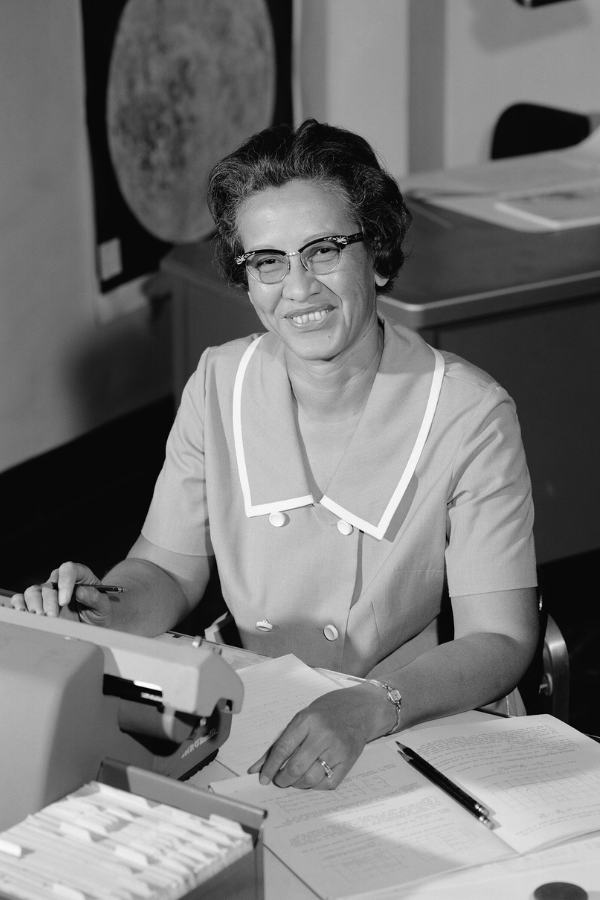

Solving for X: The Powerful Contributions of Women to Mathematics
Summary
Reflection Questions
Journal Prompt
From the ancient scrolls of Alexandria upon which Hypatia wrote to the modern-day research labs where Maryam Mirzakhani expanded our knowledge of geometry, women mathematicians have persistently broken through the rigid boundaries of their times. Despite their groundbreaking contributions and pioneering work, women in mathematics have historically faced significant obstacles, not least of which is the widespread under-recognition of their achievements. For centuries, societal norms and institutional barriers confined many women to the shadows, allowing their male counterparts to bask in the spotlight of discovery and innovation.
This systemic dismissal of women’s contributions has not only obscured their rightful place in the annals of mathematical history but also perpetuated a cycle of invisibility that discourages future generations of women from entering the field. Even when women like Sophie Germain used male pseudonyms to circumvent gender biases, their true identities and the full extent of their contributions often remained unrecognized.
The struggle for recognition is not just a historical footnote. It is a continuing challenge that underscores the importance of celebrating and acknowledging the vital role women have played—and continue to play—in advancing mathematical knowledge. Let us do our part in acknowledging the indelible mark that the following famous female mathematicians have left on a field that shapes the very foundation of our world while we recognize that many contributors have been lost to history.
Examining the Ongoing Under-Representation of Women in Mathematics
The underrepresentation and diminishment of women mathematicians throughout history is a multifaceted issue, deeply rooted in societal, cultural, and institutional biases. This phenomenon is evident both in the way contemporaries treated these women and in how historians have subsequently recorded their achievements.
Historical Context
Historically, women faced significant barriers to education, particularly in fields dominated by men, such as mathematics and the sciences. Societal norms often relegated women to domestic roles, limiting their access to formal education and professional opportunities. Women who pursued their interests in mathematics had to navigate a landscape that was, at best, indifferent and, at worst, openly hostile to their participation.
Contemporary Treatment
Women mathematicians often received little recognition from their contemporaries, even when their work was groundbreaking. For instance, Sophie Germain, a prominent figure in number theory and elasticity, initially submitted her work under a male pseudonym to ensure it was taken seriously. Similarly, Emmy Noether, whose contributions to abstract algebra and theoretical physics were revolutionary, faced obstacles in securing academic positions solely because of her gender.
Recognition by Historians
The contributions of women to mathematics have also been historically minimized or overlooked by scholars and historians. Until relatively recently, the narrative of mathematical progress was predominantly male-centric, with the achievements of male mathematicians highlighted over their female counterparts. This bias in historical accounts has contributed to the erasure of women from the mathematical canon, making it difficult for future generations to find role models within the field.
Modern Perspectives


In recent years, there has been a growing effort to recognize and celebrate the contributions of women in mathematics. The story of Katherine Johnson, a mathematician whose calculations were crucial for NASA’s spaceflights, gained widespread recognition decades after her work was done, illustrating the delayed acknowledgment women often receive. The Fields Medal awarded to Maryam Mirzakhani in 2014 marked a historic moment, not only for her exceptional contributions to mathematics but also for breaking a gender barrier in the field’s highest honors.
The Ongoing Struggle for Women Who Study and Teach Mathematics
The struggle of women mathematicians to be recognized and remembered is an ongoing challenge, reflecting broader issues of gender inequality in STEM fields. While progress has been made in acknowledging their contributions, much work remains to ensure that women in mathematics receive the recognition they deserve, both historically and in contemporary times.
Addressing these issues requires a concerted effort to reevaluate historical narratives, promote gender equity in STEM education and careers, and celebrate the achievements of women mathematicians as integral to the fabric of the field’s history.
Famous Female Mathematicians Who Continue to Inspire
The history of mathematics features many brilliant female mathematicians who have made significant contributions from ancient times to the present. Here’s a list highlighting some of these remarkable individuals across different periods:
Hypatia of Alexandria


Hypatia of Alexandria, born around 360 AD, is largely regarded as the very first female mathematician. As the head of the Neoplatonic school in Alexandria, she distinguished herself not only as a philosopher but also as a mathematician and astronomer, disciplines in which women’s contributions were often dismissed or overlooked.
Hypatia’s life was emblematic of a period of cultural and intellectual ferment. Alexandria, under Roman rule, was a melting pot of ideas and a center for scholarly pursuit. In this vibrant intellectual landscape, she thrived, teaching and engaging with students and scholars on subjects ranging from the mysteries of the cosmos to the intricacies of geometric theorems.
Her work in mathematics, particularly in geometry and algebra, and her efforts to elucidate the works of earlier mathematicians like Diophantus and Apollonius, underscore her significant yet under-appreciated contributions to the mathematical canon.
Hypatia’s Struggles as a Female Mathematician
The tragic end of Hypatia’s life, murdered by a Christian mob in 415 AD, marks a dark chapter in the history of intellectual freedom, signaling not just the loss of a brilliant mind but also the increasing tension between the old pagan world and the rising influence of Christianity. Despite the brutality of her death, Hypatia’s legacy as a teacher and scholar endured, inspiring generations of thinkers and serving as a testament to the resilience of knowledge against the forces of ignorance and fanaticism.
However, the historical record of Hypatia’s work is frustratingly sparse, with most of our knowledge of her life and contributions coming from the writings of later historians and philosophers. This scarcity of direct evidence has contributed to her mythologization, transforming Hypatia into a symbol of the struggle for intellectual freedom and the pursuit of knowledge under the most adverse conditions. Her story, while shrouded in the mists of time, continues to resonate as a reminder of the enduring power of reason and the unquenchable human thirst for understanding.
Émilie du Châtelet
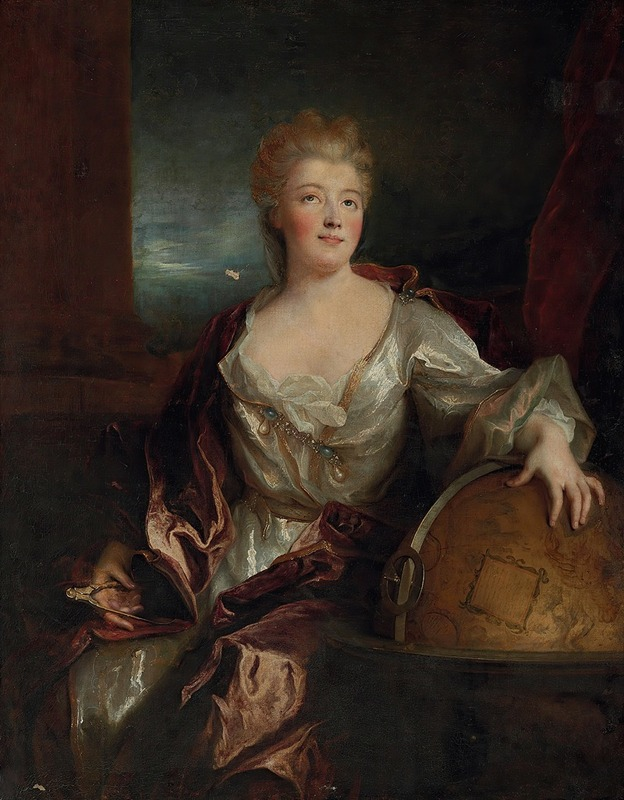

Émilie du Châtelet, born in Paris in 1706, was a formidable intellect of the Enlightenment, whose contributions to physics and mathematics significantly impacted the scientific discourse of her time and beyond. Educated in a range of disciplines from a young age, du Châtelet’s intellectual curiosity and prowess were evident early on, but it was her work in physics and mathematics that cemented her place in the annals of science.
Her most celebrated achievement is her translation and commentary on Isaac Newton’s “Principia Mathematica.” Du Châtelet’s translation remains the standard French version of the text to this day, a testament to her meticulous work and deep understanding of Newtonian physics. Beyond translation, her commentary and additions to the “Principia” helped elucidate complex concepts, making Newton’s ideas more accessible to a broader audience. Du Châtelet’s own scientific research was pioneering, particularly her hypothesis about the conservation of energy, which prefigured what would become a fundamental principle in physics.
In addition to her scientific endeavors, Émilie du Châtelet’s life was marked by her defiance of the societal norms that restricted women’s participation in academic and intellectual spheres. Her partnership with Voltaire, one of the Enlightenment’s most prominent figures, was both a personal and professional collaboration that produced a vibrant intellectual exchange. Their shared residence became a hub for scientific discussion and inquiry.
Du Châtelet’s work on the nature of light and heat, and her exploration of the concepts of energy and motion, contributed to the development of ideas that would later be crucial to scientific advancements. Despite facing the considerable challenge of being a woman in a field dominated by men, du Châtelet never wavered in her pursuit of knowledge, leaving behind a legacy that would inspire future generations of scientists. Her life and work serve as a powerful example of the intellectual contributions women can make when given the opportunity, and her story continues to resonate as a call for gender equality in science and education.
Maria Gaetana Agnesi
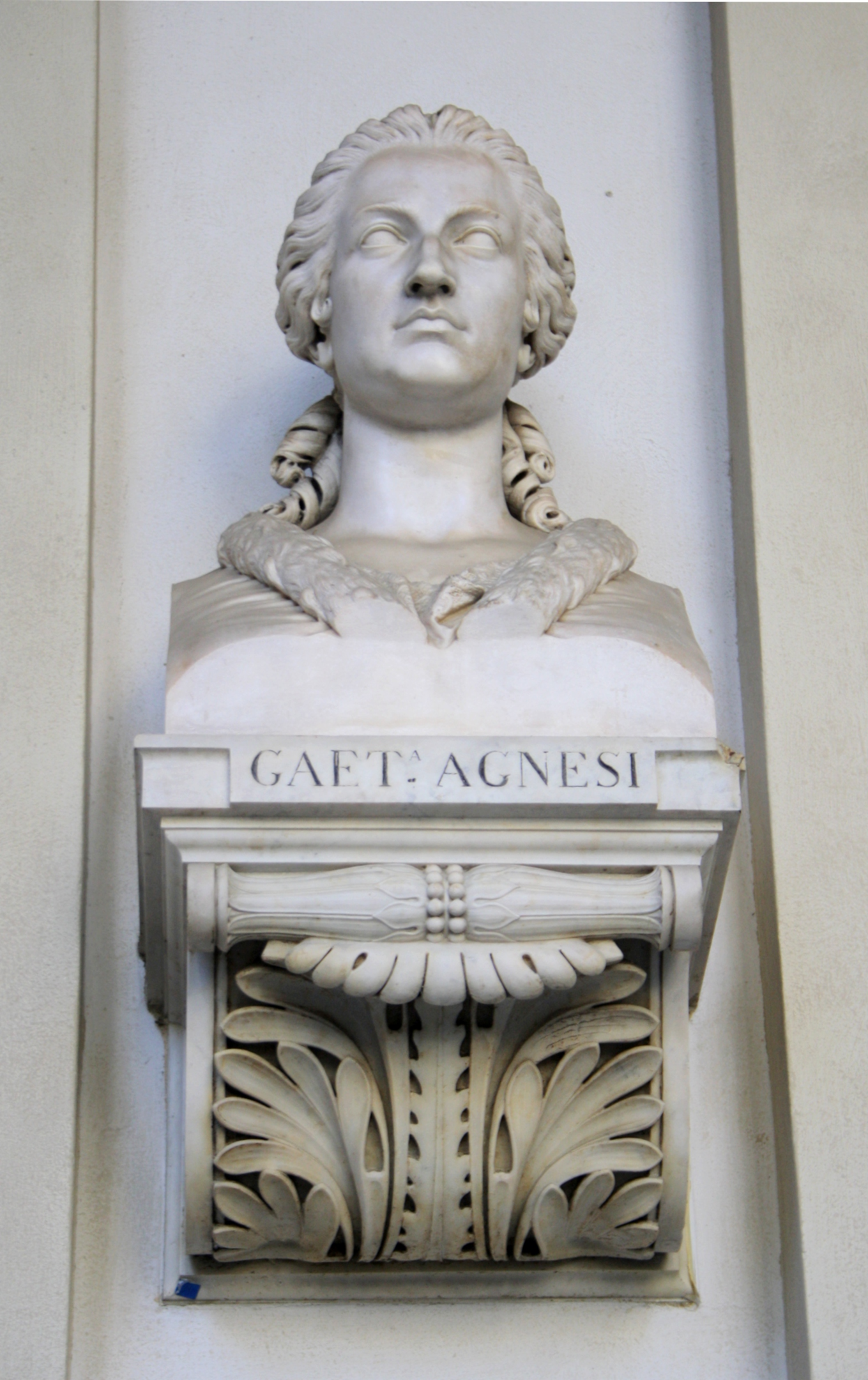

Maria Gaetana Agnesi, born in Milan in 1718, emerged as a prodigious talent in a period when the intellectual contributions of women were often marginalized or ignored. Demonstrating remarkable prowess in languages and mathematics from an early age, Agnesi’s scholarly pursuits were supported by her affluent family, which was somewhat unusual for women of her time.
By her early twenties, the famous female mathematician had already made significant contributions to the field, most notably through her comprehensive work, “Instituzioni analitiche ad uso della gioventù italiana” (Analytical Institutions for the Use of Italian Youth), published in 1748. This work was a seminal textbook covering the then-emerging field of calculus and was remarkable not only for its clarity and depth but also for being one of the first of its kind written by a woman.
Agnesi’s “Instituzioni analitiche” served as a vital resource for students and scholars alike, effectively laying the groundwork for further advancements in calculus. Beyond her mathematical endeavors, Agnesi’s work reflected the intellectual rigor and enlightenment thinking of her era, challenging the prevailing notions of women’s roles in science and academia.
Maria Gaetana Agnesi’s Struggles as a Female Mathematician
Despite her achievements, Maria Gaetana Agnesi’s life and work exemplify the challenges faced by women in the sciences during the 18th century. After the death of her father, Agnesi turned away from mathematics and devoted much of her later life to religious and charitable activities, a shift that some historians interpret as a reflection of the limited opportunities available to women in scientific academia at the time.
Nonetheless, her legacy in mathematics, particularly her contributions to calculus and the study of curves, remains significant. The “Witch of Agnesi,” a curve she discussed in her work, continues to be a topic of study in calculus, immortalizing her name within the mathematical lexicon.
Agnesi’s journey from a child prodigy to a celebrated mathematician, and later, a philanthropist, underscores the multifaceted nature of her intellect and character. Her life story, marked by both brilliance and the societal constraints of her time, highlights the enduring impact of women in mathematics and the sciences, paving the way for future generations to explore and expand the boundaries of human knowledge.
Sophie Germain
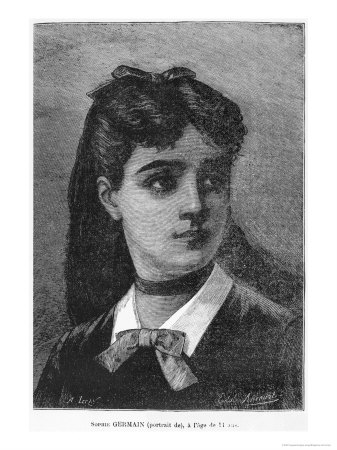

Sophie Germain, born in Paris in 1776 amidst the tumult of the French Revolution, emerged as a self-taught mathematician whose contributions, particularly to number theory and the theory of elasticity, have left an indelible mark on mathematics. Her journey into the world of numbers began in her adolescence, driven by a passion for knowledge and an insatiable curiosity about the mathematical puzzles of her time.
Germain’s early foray into mathematical research was marked by societal barriers that restricted women’s access to formal education. Undeterred, she pursued her studies independently, using a male pseudonym to submit her work and correspond with leading mathematicians of her era, including Carl Friedrich Gauss. Her determination to engage with the mathematical community, despite the gender biases that sought to exclude her, speaks volumes about her resilience and dedication to her craft.
Sophie Germain’s most notable achievement lies in her pioneering work on Fermat’s Last Theorem. She developed what is now known as Germain’s Theorem, providing a significant foundation for proving the theorem for a special case of prime numbers, known as Germain primes. Beyond number theory, Germain made substantial contributions to the understanding of the elasticity of materials, an area of study that had crucial implications for engineering and physics. Her work in this field was groundbreaking, leading to what would later be recognized as the Germain-Lagrange equation in the theory of elasticity.
Sophie Germain’s Struggles as a Female Mathematician
Despite the novelty and importance of her contributions, the French mathematician faced considerable obstacles in receiving recognition from her contemporaries, primarily due to her gender. It was only posthumously that her work received the acknowledgment it deserved, illustrating the often-delayed recognition of women’s contributions to science and mathematics.
Sophie Germain’s legacy transcends her mathematical discoveries; it embodies the struggle and perseverance of women in scientific fields against the prevailing gender biases of their time. Her intellectual journey—a testament to self-education, determination, and the pursuit of knowledge against all odds—continues to inspire mathematicians and scientists.
Germain’s life and work highlight the critical need for inclusivity and recognition of contributions regardless of gender, paving the way for future generations to explore the vast and intricate world of mathematics without the constraints of societal prejudice.
Ada Lovelace
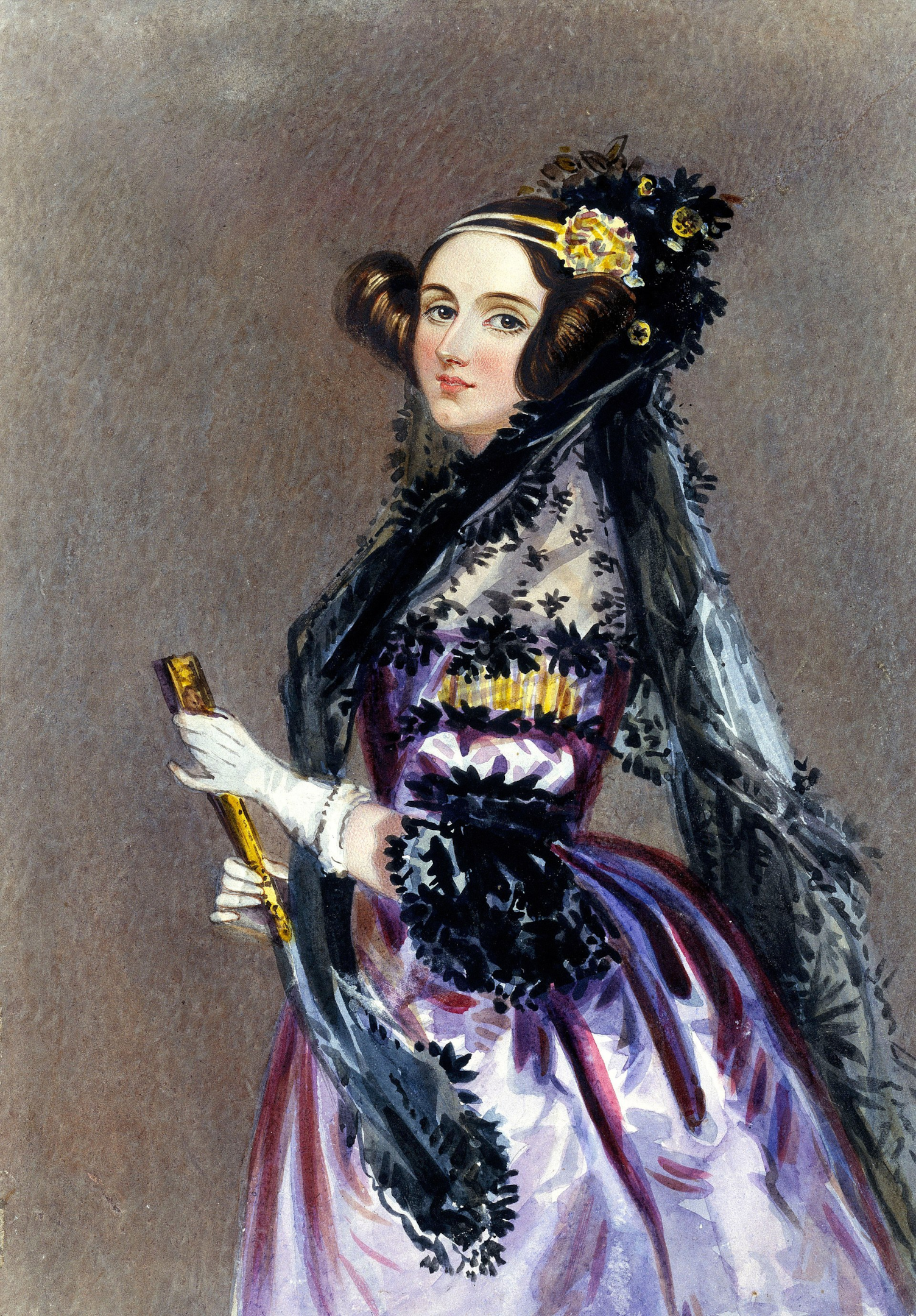

Ada Lovelace, born in 1815 in London, is celebrated as the world’s first computer programmer, an accolade that underscores her visionary contributions to the field of computer science long before the advent of modern computers. The daughter of the famed poet Lord Byron and the mathematically inclined Anne Isabella Milbanke, Lovelace was exposed to an education that was unusually comprehensive for women of her time, blending the arts and sciences in a manner that would profoundly influence her later work.
Her mathematical talents and interests led her to collaborate with Charles Babbage, the inventor of the Analytical Engine, which is considered a precursor to the modern computer. Lovelace’s most significant contribution came in the form of an extensive set of notes she developed for an article by Italian mathematician Luigi Federico Menabrea, discussing Babbage’s Analytical Engine.
Within these notes, Lovelace not only translated the original article from French to English but also added a series of her own annotations that were three times the length of the original text. These annotations contained what is now recognized as the first algorithm intended to be processed by a machine, making her the first computer programmer.
More than her technical contributions, Lovelace’s insights into the potential of computing machines were profoundly ahead of her time. She envisioned a future where machines like the Analytical Engine could manipulate symbols in accordance with rules and that they could be used to create music, produce graphics, and be useful in scientific research, essentially predicting the multifaceted utility of modern computers.
Ada Lovelace’s Enduring Legacy
Ada Lovelace’s legacy is a testament to the intersection of creativity and analytical thinking, highlighting the untapped potential of combining the humanities and sciences. Despite the societal constraints of her era, which often relegated women to the peripheries of scientific and mathematical inquiry, Lovelace’s work broke new ground, laying the foundational concepts for future generations in the computing and mathematical sciences.
Her story is not just one of remarkable intellectual achievement but also of overcoming the gender biases of her time to contribute fundamentally to the birth of an entirely new discipline. Today, Lovelace is celebrated as a pioneer of computer science, and her contributions serve as a lasting inspiration for women in technology, embodying the critical role of diversity and inclusion in driving innovation and discovery.
Emmy Noether
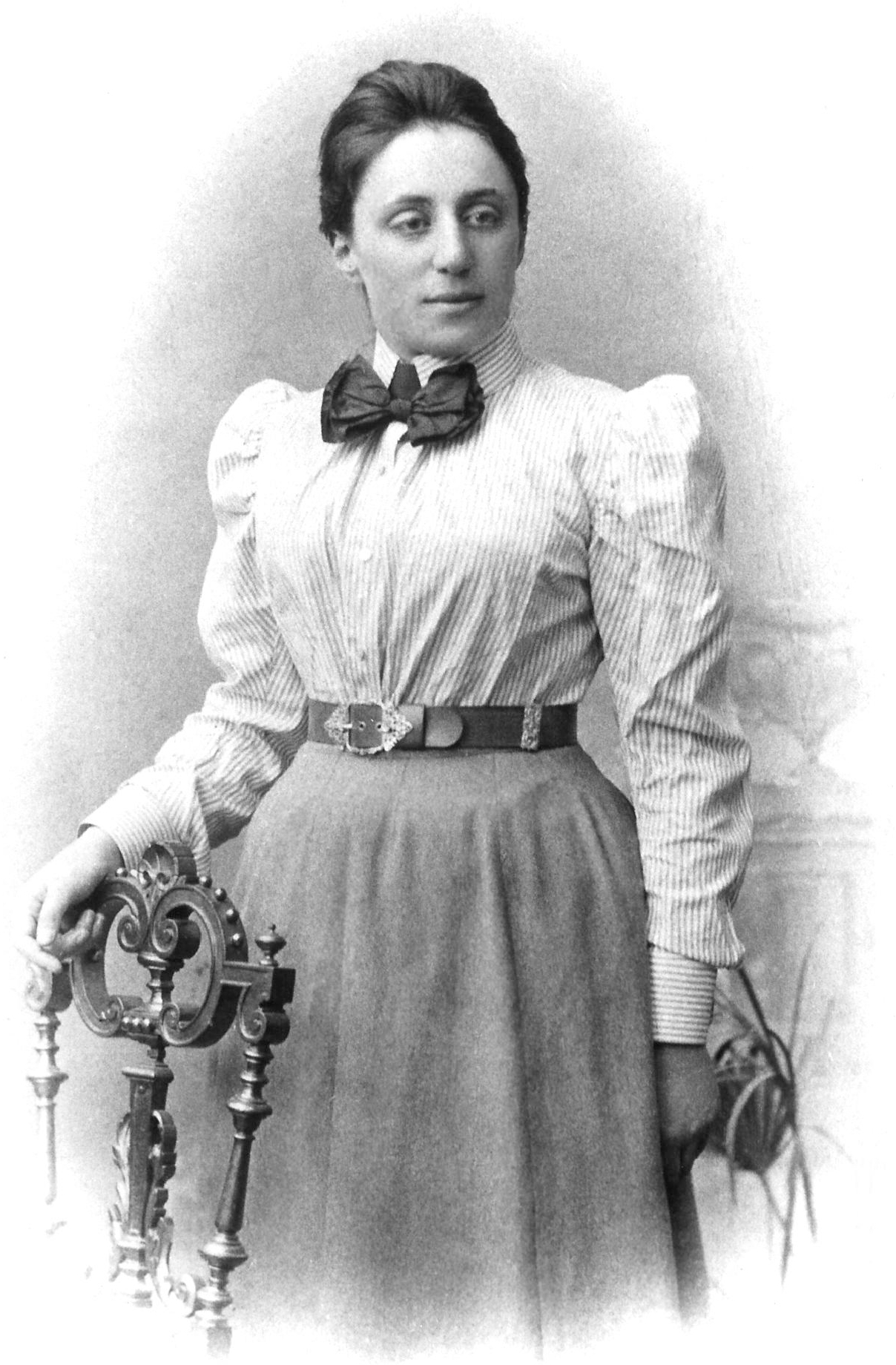

Emmy Noether, born in 1882 in Erlangen, Germany, is heralded as one of the most influential mathematicians of the 20th century, whose groundbreaking work in abstract algebra and theoretical physics has had a profound and lasting impact on these fields. Noether’s contributions to mathematics include the development of abstract algebraic structures, such as rings, fields, and algebras, which have become foundational to modern algebra.
Her work in this area not only revolutionized the way mathematicians understand these structures but also facilitated significant advances in other areas of mathematics and physics. Perhaps her most famous contribution is Noether’s Theorem, a pivotal result in theoretical physics that establishes a deep connection between symmetries in physics and conservation laws, a principle that has become a cornerstone in the field.
Noether’s Struggles and Resilience
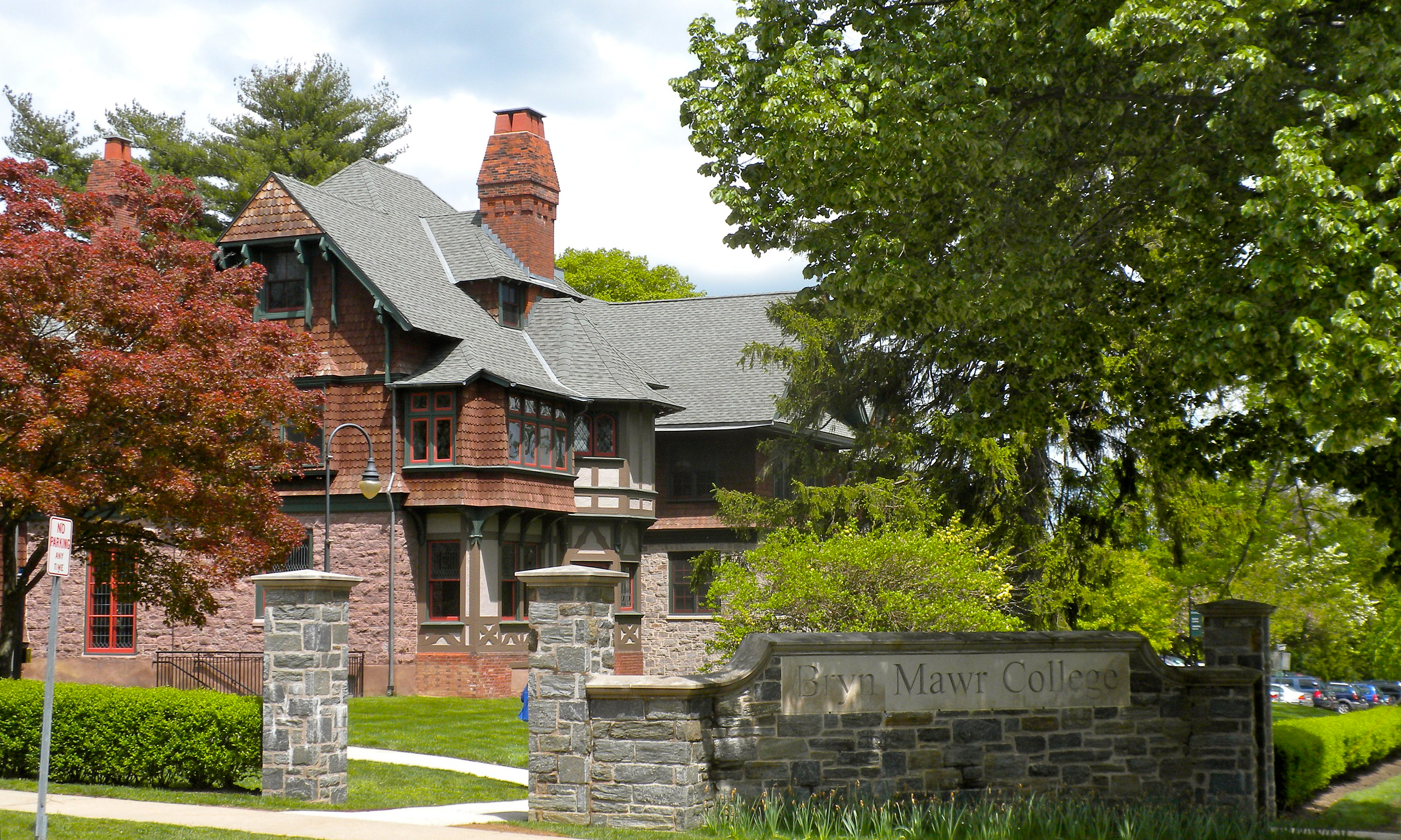

Noether’s journey in mathematics was fraught with challenges, primarily stemming from the societal norms and institutional barriers that existed at the time regarding women in academia. Despite completing her doctoral degree with distinction, Noether was initially barred from holding official academic positions simply because she would be a female math teacher.
For many years, she worked at the University of Göttingen without pay, delivering lectures under the name of her male colleagues who recognized her brilliance and sought to circumvent the restrictions imposed by the university’s policies. Her perseverance and the quality of her work eventually led to her receiving a position as a math professor at Göttingen, though it was much later in her career and still not commensurate with her contributions.
Noether’s struggles extended beyond the academic realm when she was forced to flee Nazi Germany in 1933 because of her Jewish heritage, finding refuge in the United States where she continued her work until her untimely death in 1935. She spent her final years at Bryn Mawr College. Despite these obstacles, Emmy Noether’s legacy as a mathematician is monumental, embodying the relentless pursuit of knowledge and the fight for recognition in a field that was, at the time, largely inaccessible to women.
Her story is a testament to her indomitable spirit and unparalleled intellect, serving as a beacon of inspiration for generations of mathematicians and scientists, particularly women, who navigate the challenges of pursuing careers in STEM fields. Noether’s life and work remind us of the importance of resilience, the value of mentorship and support, and the transformative power of mathematics to unlock the mysteries of the universe. Today, we remember Emmy Noether as a highly regarded math professor who never received enough recognition during her lifetime.
Sofia Vasilyevna Kovalevskaya
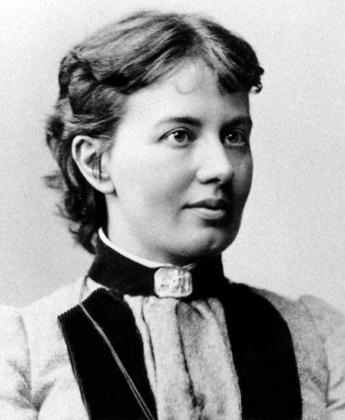

Sofia Vasilyevna Kovalevskaya (1850–1891) was a pioneering Russian mathematician, making significant contributions to analysis, partial differential equations, and mechanics. Born in Moscow, Kovalevskaya was a trailblazer for women in mathematics, facing substantial societal and academic hurdles due to her gender. In an era when women were largely excluded from formal academic pursuits, especially in fields like mathematics and science, Kovalevskaya had to fight for her education and professional recognition.
Her early interest in mathematics was encouraged by her uncle and a family friend, the physicist Nikolai Tyrtov, who provided her with books and discussion on the subject. However, the lack of formal educational opportunities for women in Russia led Kovalevskaya to pursue her studies abroad.
She entered into a marriage of convenience with Vladimir Kovalevsky, a paleontology student, which allowed her to leave Russia and enroll at the University of Heidelberg in Germany. Despite initial resistance from the university’s faculty, she audited classes and eventually transferred to the University of Berlin, where she studied under Karl Weierstrass, one of the most prominent mathematicians of the time. Weierstrass was so impressed by Kovalevskaya’s talent that he tutored her privately and helped her to publish her first papers.
Kovalevskaya’s Struggles as a Female Mathematician in Russia
Kovalevskaya’s doctoral thesis on partial differential equations earned her a summa cum laude doctorate in mathematics from the University of Göttingen in 1874, making her one of the first women in Europe to achieve such a distinction. Despite her qualifications, Kovalevskaya struggled to find an academic position, facing gender-based discrimination that kept her from securing a teaching role for many years. It was not until 1883 that she was offered a position at Stockholm University in Sweden, where she became the first woman to hold a full professorship in Northern Europe.
Kovalevskaya’s most famous contributions to mathematics include the Kovalevskaya Top, a solution to the problem of the motion of a rigid body around a fixed point, and significant work in the theory of partial differential equations. Her achievements were recognized with the Prix Bordin from the French Academy of Sciences, and she was an active member of the scientific community until her untimely death at the age of 41.
Throughout her life, Kovalevskaya not only contributed to mathematical theory but also broke down barriers for women in academia, demonstrating through her own achievements that women could contribute significantly to scientific and mathematical knowledge. Her legacy endures as a testament to her brilliance and perseverance, inspiring future generations of women to pursue careers in mathematics and the sciences.
Mary Cartwright


Pictured above on the far right, Mary Cartwright, born in 1900 in Aynho, Northamptonshire, England, was a pioneering mathematician whose work was the foundation of dynamical systems and chaos theory. Educated at the University of Oxford and the University of Cambridge, Cartwright’s early work focused on classical analysis.
However, her interests and contributions expanded significantly through her collaboration with J.E. Littlewood, with whom she explored the then-nascent field of nonlinear differential equations. This collaboration was sparked by the practical problems posed by radio and radar technologies during the Second World War, leading to groundbreaking insights into the behavior of nonlinear systems.
Cartwright’s work in this area, particularly her study of the Van der Pol oscillator, provided early examples of what would later be understood as chaotic behavior in dynamical systems. Her research not only advanced mathematical theory but also had profound implications for the development of modern physics and engineering, influencing how scientists understand complex systems across various disciplines.
Challenges Faced by Cartwright During Her Career
Despite her significant contributions to mathematics and her role as a trailblazer for women in the sciences, Mary Cartwright faced numerous challenges and barriers throughout her career. As a woman in a predominantly male field, Cartwright navigated a professional landscape that often undervalued and overlooked the achievements of female scientists.
Although she achieved considerable recognition, becoming the first female mathematician to be elected as a Fellow of the Royal Society and serving as the president of the London Mathematical Society, these milestones were reached in the face of institutional and societal biases that limited opportunities for women in academia. Cartwright’s persistence and success, in spite of these obstacles, not only highlight her exceptional talent and dedication but also serve as an inspiration to future generations of women mathematicians and scientists, demonstrating the importance of resilience and perseverance in overcoming adversity to contribute meaningfully to the advancement of knowledge.
Katherine Johnson
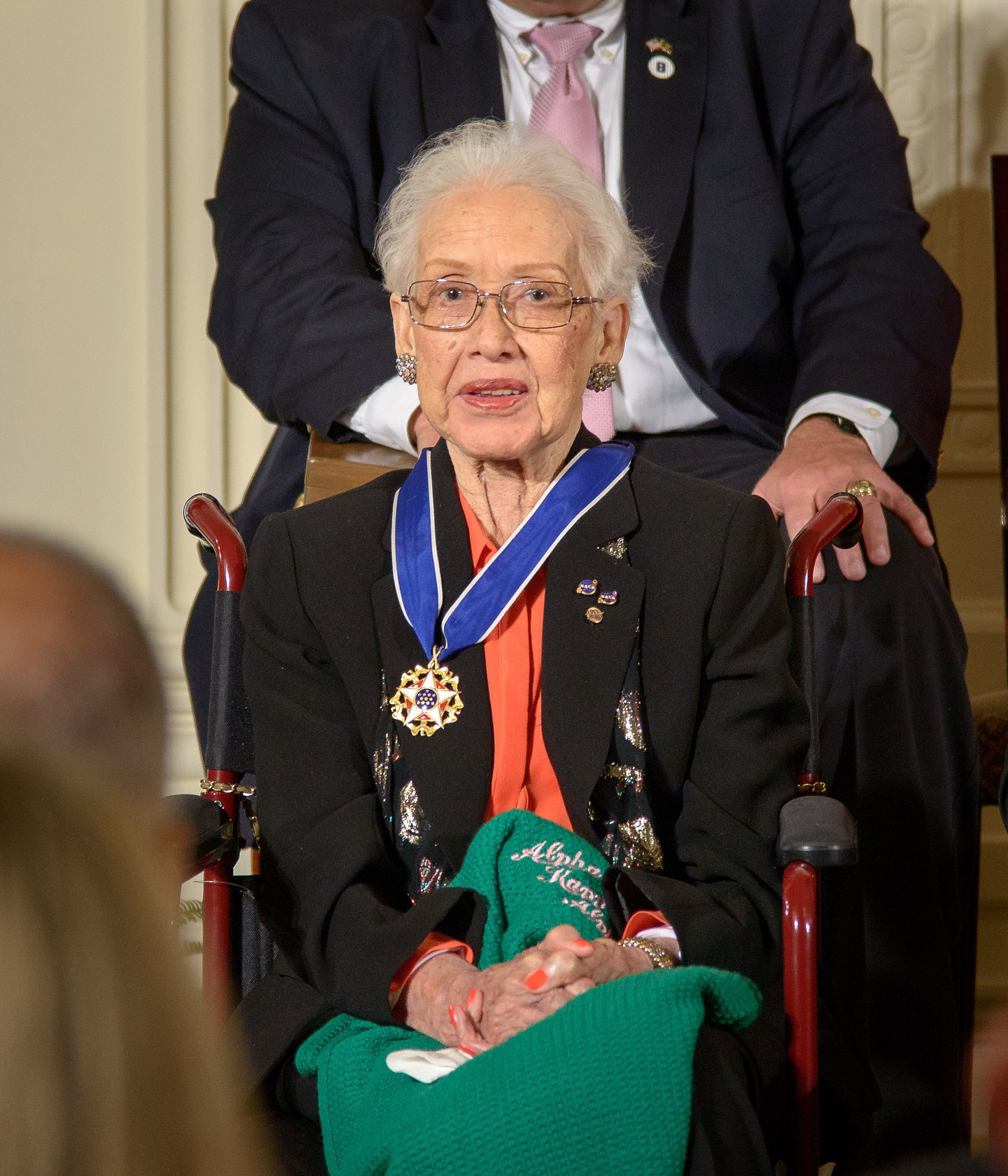

Next on our list of famous mathematicians is Katherine Johnson. Katherine Johnson, born in 1918 in White Sulphur Springs, West Virginia, was an African American mathematician whose precise calculations of orbital mechanics were crucial to the success of the United States’ manned spaceflights, including the Mercury and Apollo missions.
Educated at West Virginia State College and West Virginia University, Johnson displayed an exceptional talent for mathematics from an early age, overcoming the dual hurdles of racial and gender discrimination prevalent in early 20th-century America. Her work at NASA, then known as the National Advisory Committee for Aeronautics (NACA), began in the segregated West Area Computing unit, a group of African American female mathematicians who played an integral role in the success of the U.S. space program.
Johnson’s contributions to space exploration were monumental. Her calculations helped ensure the success of the Mercury missions, including John Glenn’s historic orbit around Earth, and the Apollo 11 mission to the moon. Her work on the trajectory analysis for the first American in space and the lunar landing mission showcased not only her mathematical prowess but also her ability to perform under pressure and her unwavering commitment to accuracy. Johnson’s expertise in celestial navigation earned her the trust of astronauts and engineers alike, at a time when the margin for error was zero and the stakes could not have been higher.
Challenges Faced by Katherine Johnson as a Black Female Mathematician
Despite her critical contributions, Katherine Johnson’s achievements were not widely recognized until decades later, reflecting the broader societal tendencies to overlook the contributions of women, especially women of color, in the fields of science, technology, engineering, and mathematics (STEM). Her story, along with those of her colleagues Dorothy Vaughan and Mary Jackson, was brought to mainstream attention through the book and subsequent film “Hidden Figures,” highlighting the significant yet underappreciated role that African American women played in the space race.
Johnson’s perseverance and success in the face of systemic racism and sexism broke barriers for future generations of women and minorities in STEM. In acknowledging her contributions, NASA named a facility in her honor, and she was awarded the Presidential Medal of Freedom in 2015. Katherine Johnson’s legacy is a testament to the power of resilience, intellect, and the crucial role of diversity in achieving collective goals, serving as an enduring inspiration to those who challenge the boundaries of what is possible.
Maryam Mirzakhani
Maryam Mirzakhani, born in 1977 in Tehran, Iran, was an exceptional mathematician whose groundbreaking work in the fields of hyperbolic geometry, ergodic theory, and symplectic geometry significantly advanced our understanding of the complexities of mathematical surfaces and their dynamics.
Educated at Sharif University of Technology in Tehran and then at Harvard University for her PhD, Mirzakhani’s brilliance was evident early in her career, showcased by her historic achievements at the International Mathematical Olympiad, where she earned gold medals, achieving a perfect score in her second appearance. Her doctoral work under the guidance of Curtis McMullen, a Fields Medalist himself, laid the groundwork for a career that would be marked by deep and profound contributions to mathematics.
Mirzakhani’s work was characterized by her ability to draw connections between distinct areas of mathematics, revealing deep insights into the geometric structures of Riemann surfaces and their moduli spaces. Her research not only solved longstanding problems but also opened up new avenues of inquiry, influencing various fields beyond pure mathematics, including quantum field theory, complex dynamics, and topology.
In 2014, the Iranian mathematician was awarded the Fields Medal, becoming the first woman and the first Iranian to receive what is often described as the Nobel Prize of Mathematics. This historic achievement was in recognition of her work on the dynamics and geometry of Riemann surfaces and their moduli spaces, a testament to her innovative approach and profound understanding of complex mathematical concepts. She remains the only woman to have received this honor.
Mirzakhani’s Struggles and Legacy
Despite her monumental achievements, Mirzakhani’s journey was not without its challenges. Navigating a path in a field where women are significantly underrepresented, she became an inspiring figure for young mathematicians, especially women and girls, around the world. Mirzakhani’s humility and dedication to her work, along with her remarkable achievements, made her a role model and symbol of hope for overcoming barriers in pursuit of scientific and mathematical discovery.
Tragically, her life and career were cut short by cancer in 2017, but her legacy endures, inspiring countless individuals to explore the beauty and complexity of mathematics. Maryam Mirzakhani’s contributions to mathematics have left an indelible mark on the field, and her life story continues to encourage a more inclusive and diverse scientific community, highlighting the importance of providing opportunities for all talented individuals to reach their potential.
Final Thoughts on Famous Women Mathematicians from History
The women profiled above represent just a fraction of the many who have contributed to the field of mathematics. Their work spans a wide range of mathematical areas, including algebra, calculus, geometry, and theoretical physics, demonstrating the vital role that women have played in advancing mathematical knowledge throughout history. Reading the stories of famous female mathematicians can make it seem like the need to shine an extra-bright light on women who succeed in the field has passed. Nothing could be further from the truth. Female mathematicians continue to fight for recognition. We encourage readers to list the female mathematicians who have made an impact on their lives or careers in the comments below.








